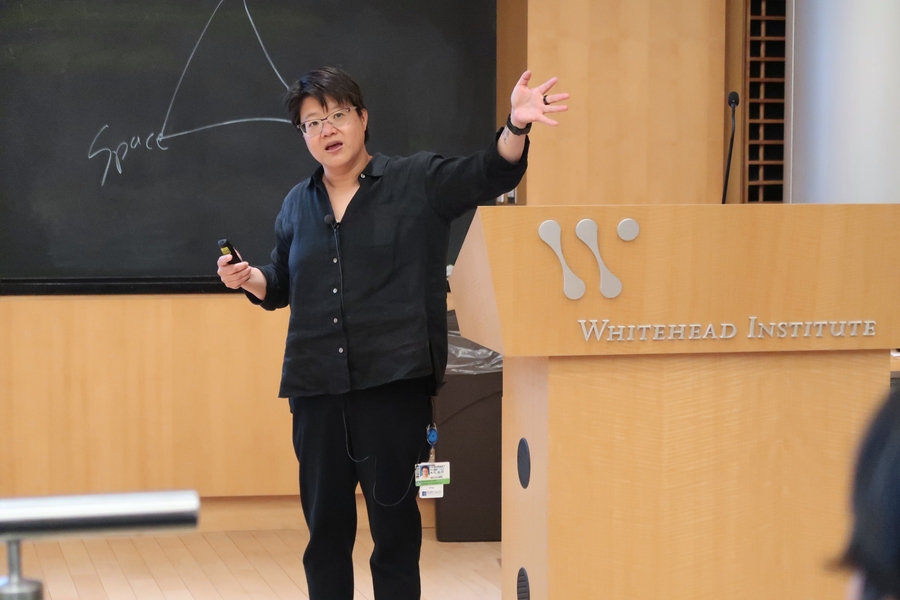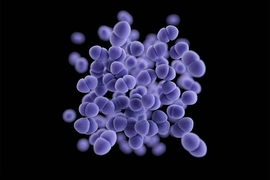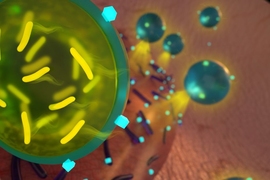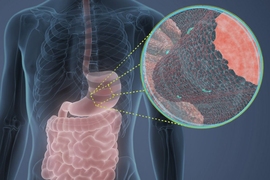After Alexander Fleming discovered the antibiotic penicillin in 1928, spurring a “golden age” of drug development, many scientists thought infectious disease would become a horror of the past. But as antibiotics have been overprescribed and used without adhering to strict regimens, bacterial strains have evolved new defenses that render previously effective drugs useless. Tuberculosis, once held at bay, has surpassed HIV/AIDS as the leading cause of death from infectious disease worldwide. And research in the lab hasn’t caught up to the needs of the clinic. In recent years, the U.S. Food and Drug Administration has approved only one or two new antibiotics annually.
While these frustrations have led many scientists and drug developers to abandon the field, researchers are finally making breakthroughs in the discovery of new antibiotics. On Jan. 9, the Department of Biology hosted a talk by one of the chemical biologists who won’t quit: Deborah Hung, core member and co-director of the Infectious Disease and Microbiome Program at the Broad Institute of MIT and Harvard, and associate professor in the Department of Genetics at Harvard Medical School.
Each January during Independent Activities Period, the Department of Biology organizes a seminar series that highlights cutting-edge research in biology. Past series have included talks on synthetic and quantitative biology. This year’s theme is Microbes in Health and Disease. The team of student organizers, led by assistant professor of biology Omer Yilmaz, chose to explore our growing understanding of microbes as both pathogens and symbionts in the body. Hung’s presentation provided an invigorating introduction to the series.
“Deborah is an international pioneer in developing tools and discovering new biology on the interaction between hosts and pathogens,” Yilmaz says. “She's done a lot of work on tuberculosis as well as other bacterial infections. So it’s a privilege for us to host her talk.”
A clinician as well as a chemical biologist, Hung understands firsthand the urgent need for new drugs. In her talk, she addressed the conventional approaches to finding new antibiotics, and why they’ve been failing scientists for decades.
“The rate of resistance is actually far outpacing our ability to discover new antibiotics,” she said. “I’m beginning to see patients [and] I have to tell them, I’m sorry, we have no antibiotics left.”
The way Hung sees it, there are two long-term goals in the fight against infectious disease. The first is to find a method that will greatly speed up the discovery of new antibiotics. The other is to think beyond antibiotics altogether, and find other ways to strengthen our bodies against intruders and increase patient survival.
Last year, in pursuit of the first goal, Hung spearheaded a multi-institutional collaboration to develop a new high-throughput screening method called PROSPECT (PRimary screening Of Strains to Prioritize Expanded Chemistry and Targets). By weakening the expression of genes essential to survival in the tuberculosis bacterium, researchers genetically engineered over 400 unique “hypomorphs,” vulnerable in different ways, that could be screened in large batches against tens of thousands of chemical compounds using PROSPECT.
With this approach, it’s possible to identify effective drug candidates 10 times faster than ever before. Some of the compounds Hung’s team has discovered, in addition to those that hit well-known targets like DNA gyrase and the cell wall, are able to kill tuberculosis in novel ways, such as disabling the bacterium’s molecular efflux pump.
But one of the challenges to antibiotic discovery is that the drugs that will kill a disease in a test tube won’t necessarily kill the disease in a patient. In order to address her second goal of strengthening our bodies against disease-causing microbes, Hung and her lab are now using zebrafish embryos to screen small molecules not just for their extermination of a pathogen, but for the survival of the host. This way, they can investigate drugs that have no effect on bacteria in a test tube but, in Hung’s words, “throw a wrench in the system” and interact with the host’s cells to provide immunity.
For much of the 20th century, microbes were primarily studied as agents of harm. But, more recent research into the microbiome — the trillions of organisms that inhabit our skin, gut, and cavities — has illuminated their complex and often symbiotic relationship with our immune system and bodily functions, which antibiotics can disrupt. The other three talks in the series, featuring researchers from Harvard Medical School, delve into the connections between the microbiome and colorectal cancer, inflammatory bowel disease, and stem cells.
“We're just starting to scratch the surface of the dance between these different microbes, both good and bad, and their role in different aspects of organismal health, in terms of regeneration and other diseases such as cancer and infection,” Yilmaz says.
For those in the audience, these seminars are more than just a way to pass an afternoon during IAP. Hung addressed the audience as potential future collaborators, and she stressed that antibiotic research needs all hands on deck.
“It's always a work in progress for us,” she said. “If any of you are very computationally-minded or really interested in looking at these large datasets of chemical-genetic interactions, come see me. We are always looking for new ideas and great minds who want to try to take this on.”









